We decided to keep our stay in Makemo short and sail on to Tahanea, since a lot of sailors are talking about how beautiful this atoll is. With good winds we reached the biggest of the three reef passes at low water and therefor were able to sail into the atoll. We did not stay at the pass but continued on towards a small Motu (the name for sandy Island in French Polynesia) on the other side, where friends of us have liked it very much.
In this atoll there are a few islands without rats, which normally makes it difficult for ground breeding birds to breed. And there is a lot of the original vegetation left. This is also important for other birds, which only can build their nests on those native trees and bushes. We were able to find a few breeding Brown Boobies (Sula leucogaster) on the first small Motu. They build a nest out of mainly branches on the ground in which they lay two eggs. Only one of the chicks will survive. The other egg or chick will probably be thrown out of the nest or even eaten by the first born chick – this is called Siblicide. The surviving chick is now fed by the parents and grows quickly. When they hatch they are gray and almost completely naked. The white, fluffy feathers start to grow soon and they lay on a lot of weight. Fairly quickly they are almost as tall as their parents but their neck is very weak and the stomach filled to the top with food. So they have a hard time moving around and mainly sit on the ground somewhere under the bushes and trees. We were able to observe chicks from the moment they hatch until they get their first flight feathers. But one should be very careful while moving around to not disturb them too much while they are breeding. Generally one should be quiet and discrete if visiting bird Motus. This means not to spend too much time there so that the nesting birds can quickly return to their eggs and chicks, move slowly and without making too much noise, not going too close to the birds and chicks and especially not touching them (better work with the zoom of the camera), not making fire close to birds and not bringing other animals (especially dogs) onto those islands. The Motus should be left before the sun sets to give the birds time to return and settle in for the night.
During our visits we usually were accompanied by elegant White Terns (Gygis alba) which seem to be very curious and fly close above our heads. Once in a while we saw one sitting on it's egg. But they are easily scared and tend to leave quickly. They lay their egg simply on a branch without building any kind of nest. On a very small Motu we found some breeding Masked Boobies (Sula dactylatra), which lay their eggs simply on the sand above the water line. Like Brown Boobies they also lay two eggs but only one chick survives. We were able to observe freshly hatched chicks as well as bigger ones around the Motu. Sadly we only found six breeding pairs all together.
Luckily we saw a lot of Tuamotu Sandpipers (Prosobonia parvirostris) which are fairly common around Tahanea. A few years ago only about 100 of those birds were left, but now the population has grown to over 1.000 individuals again. The Tuamotu Sandpipers are curios small birds, always in motion looking for food. They are also breeding on the ground and can therefor only breed on rat free islands.
Actually Tahanea is supposed to be a reserve, nevertheless the growing of coconut palm trees for copra (the dried meat, or dried kernel, of the coconut used to extract coconut oil) has already started here. For that the islands get cleaned of their natural vegetation, mostly in burning it, and instead young coconut trees get planted. Furthermore seabird eggs are still delicatessen and are collected for eating in Polynesia. So the last breeding reserves for those seabirds are disappearing quickly.
A wonderful exception is a small Motu in the middle of the lagoon where a big population of Lesser Frigate birds (Fregata ariel) is breeding. Here the ground is too stony for coconut trees and so it is not interesting for copra production. Many Frigate birds are breeding on the bushes close to the water. With our kayak we got very close to the breeding birds as well as chicks and again saw everything from eggs to almost grown chicks. On one occasion we found a chick which fell out of the nest and was sitting on a stone surrounded by water. With the paddle we lifted it onto the shore, so that it still might have a chance to survive. In the middle of the Motu there are a lot of tall trees where a lot of Black Noddies (Anous minutus) have their nests. But they are very high up in the tree and therefor we could not say if they had any eggs or chicks in them. During sailing through the lagoon we often observed a big group of Black Noddies as well as some Boobies hunting together. If they find a swarm of small fish which are hunted by bigger ones, they all went down to the water surface and tried to catch the small fish. There were 50 or more birds on the water at the same time trying to catch something. Very spectacular!
Under water we saw a few very nice coral reefs. Even here we found traces of the global coral bleaching event of the last years. Generally the coral reefs and coral bommies are in a good condition from the surface until a few meters depth. Sadly deeper than 4-5 meters we did not find a lot of living corals. One exception are the reef passes into the atolls. Here one can find healthy corals in much deeper waters than inside the lagoons. Everywhere you go snorkeling you get accompanied by Black-tipped (Carcharhinus melanopterus) and White-tipped Reefsharks (Triaenodon obesus). We had to get used to them since there sometimes are really a lot of them around. In the reef passes we saw a lot of Grey Reefsharks (Carcharhinus amblyrhynchos), once in a while a big Lemon Shark (Negaprion acutidens) or a Tawny Nurseshark (Nebrius ferrugineus). Especially at the southern side of the western pass, where there is a place with a swarm of Crescent-tailed Bigeyes (Priacanthus hamrur). There you can find, next to different sharks, a lot of Damselfish, sometimes a Maori Wrass (Cheilinus undulatus) and swimming around the swarm a few Dogtooth Tuner (Gymnosarda unicolor). You can see those Tuner always around reefs since they hunt the fish there. If you have time you will see them catching one of the Bigeyes and eating them with two big swallows.
We were very lucky since we found some Reef Mantas (Manta alfredi) on our first snorkel trip there. During a few days we saw a lot of copepods (small shrimplike crayfish) in the water column and those attract Mantas, which love to eat them. On those days we found about 20 of those giants swimming through the pass with wide open mouths to filter the copepods out of the water. We really enjoyed watching them and let ourselves wash through the pass in the middle of them. We were even able to get a few good ID-pictures and found out that there a mostly females feeding in this pass.
One time, while looking towards the pass, we saw a group of four Humpback Whales (Megaloptera novaeangliae) coming into the lagoon. They travel all the way here to give birth and stay for a few months before leaving for Antarctic summer again.
Tahanea is definitely a place to stay for a while and always find something new to see or observe.


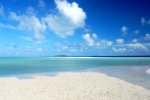
.jpg)

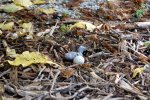





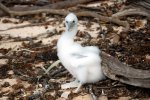
.jpg)





.jpg)

.jpg)


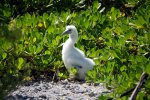
.jpg)



.jpg)
.jpg)
.jpg)

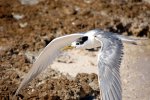
.jpg)


.jpg)
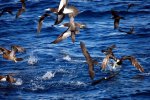
.jpg)








_with_reef_in_front.jpg)
.jpg)
.jpg)
.jpg)

.jpg)
.jpg)
.jpg)
.jpg)
.jpg)
.jpg)
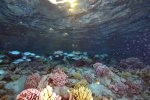
.jpg)
.jpg)
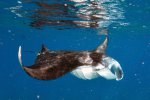
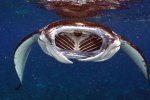
.jpg)

.jpg)
.jpg)
.jpg)
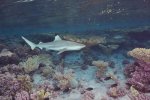
.jpg)
.JPG)
.jpg)

.jpg)
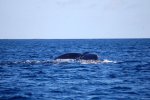
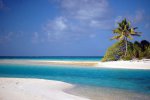
 >>planned route - join us ...
>>planned route - join us ...